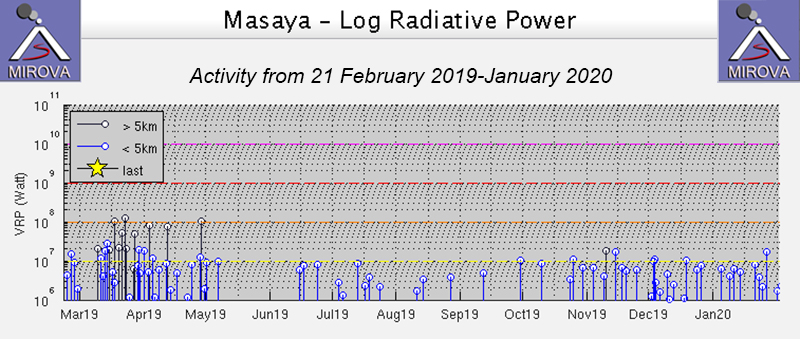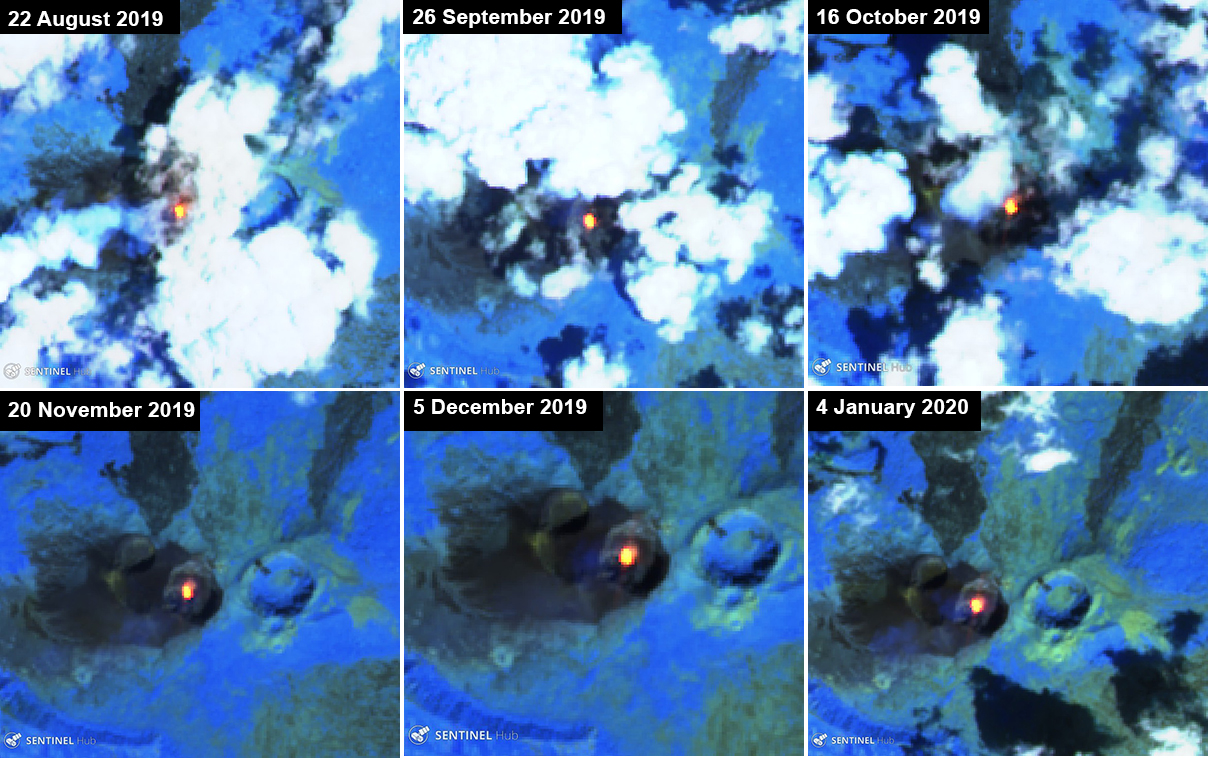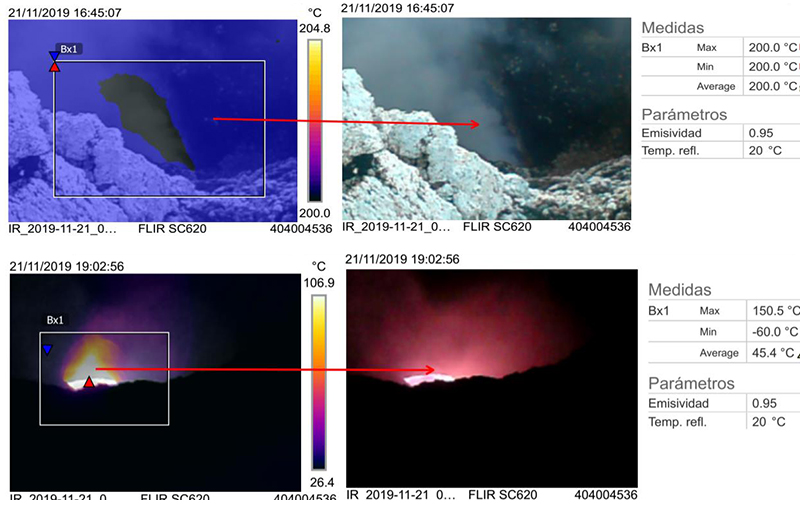Report on Masaya (Nicaragua) — February 2020
Bulletin of the Global Volcanism Network, vol. 45, no. 2 (February 2020)
Managing Editor: Edward Venzke.
Edited by Kadie L. Bennis.
Masaya (Nicaragua) Lava lake persists with lower temperatures during August 2019-January 2020
Please cite this report as:
Global Volcanism Program, 2020. Report on Masaya (Nicaragua) (Bennis, K.L., and Venzke, E., eds.). Bulletin of the Global Volcanism Network, 45:2. Smithsonian Institution. https://doi.org/10.5479/si.GVP.BGVN202002-344100
Masaya
Nicaragua
11.9844°N, 86.1688°W; summit elev. 594 m
All times are local (unless otherwise noted)
Masaya is a basaltic caldera located in Nicaragua and contains the Nindirí, San Pedro, San Juan, and Santiago craters. The currently active Santiago crater hosts a lava lake, which has remained active since December 2015 (BGVN 41:08). The primary source of information for this August 2019-January 2020 report comes from the Instituto Nicareguense de Estudios Territoriales (INETER) and satellite -based imagery and thermal data.
On 16 August, 13 September, and 11 November 2019, INETER took SO2 measurements by making a transect using a mobile DOAS spectrometer that sampled for gases downwind of the volcano. Average values during these months were 2,095 tons/day, 1,416 tons/day, and 1,037 tons/day, respectively. August had the highest SO2 measurements while those during September and November were more typical values.
Satellite imagery showed a constant thermal anomaly in the Santiago crater at the lava lake during August 2019 through January 2020 (figure 82). According to a news report, ash was expelled from Masaya on 15 October 2019, resulting in minor ashfall in Colonia 4 de Mayo (6 km NW). On 21 November thermal measurements were taken at the fumaroles and near the lava lake using a FLIR SC620 thermal camera (figure 83). The temperature measured 287°C, which was 53° cooler than the last time thermal temperatures were taken in May 2019.
MIROVA (Middle InfraRed Observation of Volcanic Activity) analysis of MODIS satellite data showed intermittent low-power thermal anomalies compared to the higher-power ones before May 2019 (figure 84). The thermal anomalies were detected during August 2019 through January 2020 after a brief hiatus from early may to mid-June.
 |
Figure 84. Thermal anomalies occurred intermittently at Masaya during 21 February 2019 through January 2020. Courtesy of MIROVA. |
Geological Summary. Masaya volcano in Nicaragua has erupted frequently since the time of the Spanish Conquistadors, when an active lava lake prompted attempts to extract the volcano's molten "gold" until it was found to be basalt rock upon cooling. It lies within the massive Pleistocene Las Sierras caldera and is itself a broad, 6 x 11 km basaltic caldera with steep-sided walls up to 300 m high. The caldera is filled on its NW end by more than a dozen vents that erupted along a circular, 4-km-diameter fracture system. The Nindirí and Masaya cones, the source of observed eruptions, were constructed at the southern end of the fracture system and contain multiple summit craters, including the currently active Santiago crater. A major basaltic Plinian tephra erupted from Masaya about 6,500 years ago. Recent lava flows cover much of the caldera floor and there is a lake at the far eastern end. A lava flow from the 1670 eruption overtopped the north caldera rim. Periods of long-term vigorous gas emission at roughly quarter-century intervals have caused health hazards and crop damage.
Information Contacts: Instituto Nicaragüense de Estudios Territoriales (INETER), Apartado Postal 2110, Managua, Nicaragua (URL: http://www.ineter.gob.ni/); MIROVA (Middle InfraRed Observation of Volcanic Activity), a collaborative project between the Universities of Turin and Florence (Italy) supported by the Centre for Volcanic Risk of the Italian Civil Protection Department (URL: http://www.mirovaweb.it/); Sentinel Hub Playground (URL: https://www.sentinel-hub.com/explore/sentinel-playground); La Jornada (URL: https://www.lajornadanet.com/, article at https://www.lajornadanet.com/index.php/2019/10/16/volcan-masaya-expulsa-cenizas/#.Xl6f8ahKjct).



